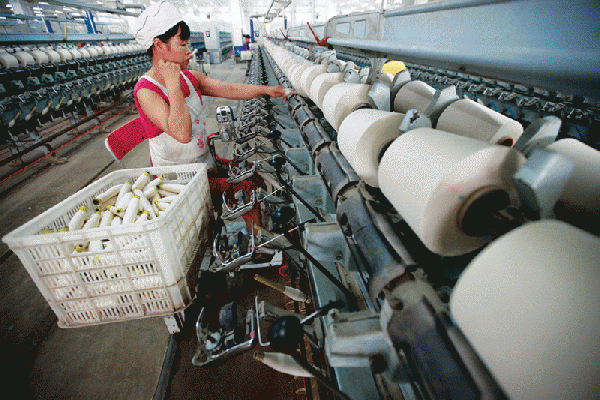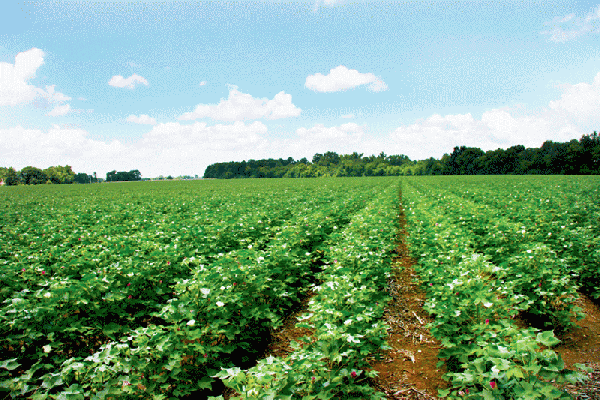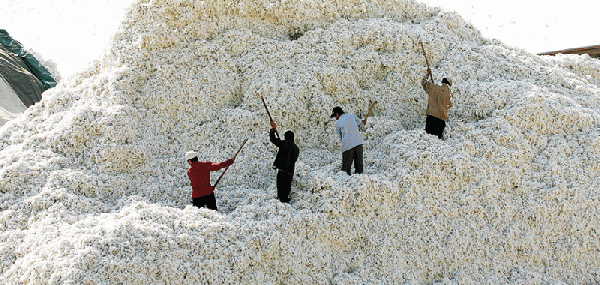
China has been the dominant headline-maker in world cotton news seemingly forever, sitting on millions of bales of reserves of unknown quality that have hung like a Sword of Damocles over markets, keeping analysts guessing what it would do with all that cotton.

O.A. CLEVELAND, JR.
Well, China is still the major force in world cotton, says O.A. Cleveland, Jr., but while the mystery of the reserves is being resolved, their excess cotton remains a bearish factor.
“China is still driving the market. China will continue to drive the market,” he said at the annual joint meeting of the Mississippi Boll Weevil Management Corporation and the Mississippi Farm Bureau Federation Cotton Policy Committee. But, he says, China’s offtake of that cotton “is greater than we had realized, and it continues to expand.”
Cleveland, who is Mississippi State University Extension professor of economics emeritus and a decades-long cotton analyst, says China is also a major player in the expanding use of the synthetic fibers that are stealing cotton market share.
“Cotton is literally getting beaten to death in the consumer end of the market. Every step we take forward, we lose ground to the chemical fibers — I refuse to say the P word [polyester],’” he laughs, “and I never buy anything with chemical fibers.
Check Current Cotton Futures Prices
“China now seems hell-bent on producing nothing but chemical fibers. These fibers are just whipping us at every turn. Cotton Incorporated has done a magnificent job of developing cotton fiber that’s very competitive in the activity market — it’s just as good as anything that Adidas or Nike are using. But we’re not selling it; the consumer hasn’t bought into it. We’ve got to find some way to take that market share back.”
Major shift in retailing arena
Another concern, Cleveland says, is a major shift that’s taking place in the retailing of cotton textile products, rapidly transitioning away from traditional sellers such as department stores and moving to the digital universe. “That’s where the growth in retail activity is occurring. Next year, Amazon.com is projected to become the largest retail seller of textile apparel in the world, surpassing all other major retailers. We have to pay a lot of attention to the fact that the digital world is becoming the principal retailer of active wear and textile goods.

After China re-classed all the cotton in its reserves, Chinese spinning mills have been buying the higher grades.—Getty Images/ChinaFotoPress
“I would argue that the way to get to the consumer with cotton’s message is to start with the spinners,” Cleveland says. “Ed Jernigan [International commodities expert] and I, through the years, have worked with spinners, and we’re still very much of the opinion that cotton needs to be introduced to consumers at the spinner level rather than at an upstream level.”
As for the outlook, he says, the ongoing China factor, an expected large crop in the U.S., a projected still large world carryover, plus the intense competition from man-made fibers, is “a combination that’s probably going to keep the market in a range between 60 cents on the low end and 69 cents on the high end. There are a lot of heavyweights sitting on the market at 67 cents and 68 cents. Something could happen to stretch it to 70 cents, but I think 60 cents to 69 cents is where we’re going to be from now through March 2017.”
Mills worldwide are fully covered for cotton needs going into third and fourth quarter 2016, Cleveland says. “They are still going to be in the market, but they aren’t chasing the market. Mills have, without question, elevated their idea of price.”
Looking to the end of this marketing year, August 1, 2017, he says, world cotton carryover is expected to be down about 2 million bales to around the 90 million bale level. “That’s better than 110 million or 104 million — but it’s still a lot of cotton.”
Mississippi now No. 3 in cotton acres
This year, Cleveland says, Mississippi ranks as the nation’s No. 3 cotton state in terms of acres, behind Texas and Georgia. “Riding up and down the Delta, I’ve seen acreage planted to cotton that I haven’t seen in a number of years — land that’s been in corn that’s now in cotton, and that’s good.”

This year, Cleveland says, Mississippi ranks as the nation’s No. 3 cotton state in terms of acres, behind Texas and Georgia.
At the global level, he notes, China is no longer the world’s largest producer of cotton, having been overtaken by India. “China was anticipating about 22 million to 23 million bales this year, but they will do well to get 20 million. They got off to a very poor start because of cold weather, and reports are that they’re being eaten up by insects.
“India had a 500-year drought in 2015. They were projecting a monsoon this year 109 percent of normal, but it has been very late coming. There are still over 8 million acres that need to be planted, which is an 8 percent drop from what they had anticipated. But they have a much longer planting season than we do, so they will have time to plant if they can get the needed moisture. A lot of cotton ground has gone to edible beans.”
IT’S FREE! Stay informed on what’s happening in Mid-South agriculture: Subscribe to Delta Farm Press Daily
Despite last year’s drought, Cleveland says, India had the largest cotton crop in the world, 26.5 million bales. “But now they’re out of 2015 crop cotton, and they’ve become a net importer of cotton for their yarn production. They were originally hoping to produce 32 million bales this season, but now that’s revised downward to 26 million to 27 million.”
In the southern hemisphere, the cotton crop year is winding down, he says. “Acreage in Brazil was down again because of drought. They got rain during early harvest, which hurt quality and yield. Brazil should normally be exporting cotton, but they’ve been importing now for eight to nine weeks.
“African cotton is basically sold out — not much left. Most of the cotton remaining is in Australia. Last year, they had a small crop and were seeing a basis of 1,500 to 1,600 points. This year, they had a bumper crop and they’re only getting about 700 points. The price isn’t as good, but they’ve got more volume. A concern, though, is that all the major irrigation dams in Australia, except for two or three, are at only about 40 percent of where they were last year. As they look to planting in October/November, they’re concerned that they won’t have the water they need.”
Sales of cotton from China's reserves
The sale of cotton from China’s huge reserves “has gone by the book,” Cleveland says. “To their credit, they’ve done what they said they were going to do. They sold over 5 million bales in a two-month period, and they will continue to sell through August. On a daily average, they’re selling 98.3 percent of their offerings.”

"China sold over 5 million bales from reserves in a two-month period, and they will continue to sell through August," says O.A. Cleveland, Jr.—Getty Images/Guang Niu
They are selling a larger volume than they anticipated, he says, “and they’re selling it at a higher price than they expected. Six months ago, they offered reserves cotton and Chinese mills wouldn’t buy it. But this year, they decided to re-inspect, re-class, and re-grade every single bale in their inventory. They created an index and sold the cotton at auction.
“The price has been 3 cents to 5 cents higher than their index — because of the re-classing, Chinese mills know exactly what they’re going to get, so they’re willing buyers now, and sales are going at a rapid clip.”
At the end of August, he says, mills will buy high grade Chinese cotton to restock inventories, but won’t buy low grade fiber. “All along, they’ve been buying U.S. and Australian high grade cotton, and they will continue to do that, so when they get to the bottom of the barrel with Chinese quality, they will have the imported high grade cotton.
Important upcoming events: Delta Farm Press Calendar of Events
“We underestimated the demand for the cotton in their reserves, and we underestimated the volume of cotton their brand new spinning mills would take. As the cotton became available in classes and quantities that were guaranteed, the mills stopped importing yarns from India, Pakistan, Bangladesh, Taiwan, Indonesia, and the U.S. They’re generating Chinese yarns again. They haven’t cut back on yarn purchases from Vietnam, primarily because the Vietnamese spinning industry was built by the Chinese. The good thing is that Vietnam is now a major consumer of U.S. cotton, a close first or second with Turkey on an annual basis.”
Cash and futures prices for the Chinese cotton have been higher than anticipated, Cleveland says. “We can deliver U.S. cotton to China for about 83 cents per pound, but Chinese mills are paying 90 cents to 93 cents per pound for their own cotton that’s three years old. Because of the re-classing, they’re getting known quality.”
He says the U.S. still has about 1.3 to 1.4 million bales of cotton that can be sold this year, “and exports have been strong.”
About the Author(s)
You May Also Like




